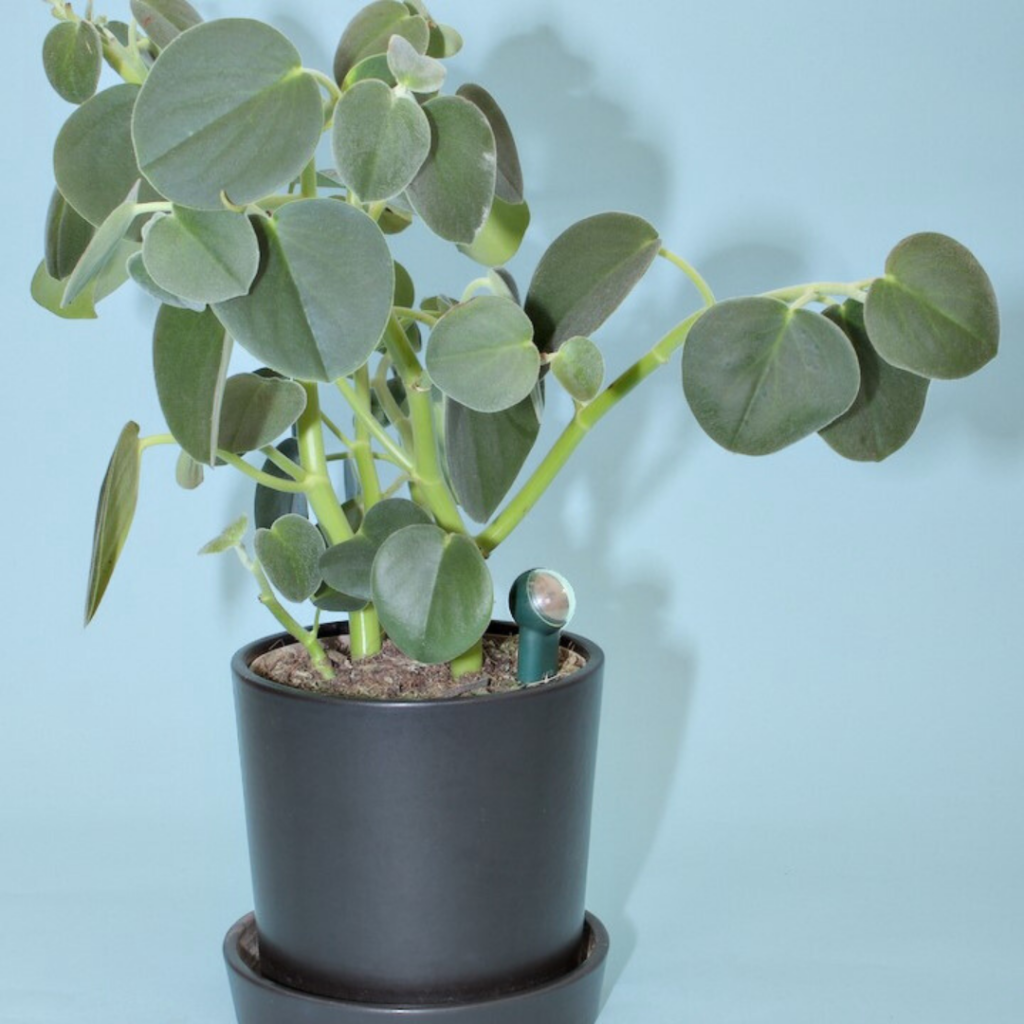
Why is correct placement important?
The FYTA Beam can only measure correctly if it is correctly inserted into the pot. If this is not the case, measured values can deviate so greatly or be so uneven that it appears as if the sensor is defective.
Therefore, pay attention to the following points:

- The beam must be aligned in the direction of the light source and should not be overshadowed by leaves if possible. In the event that this is not possible, there is a light calibration function that takes overshadowing into account.
- The FYTA Beam must be positioned centrally between the plant and the edge of the pot in order to be able to record a kind of average of the moisture in the pot (edge of pot = usually quite dry, directly next to the plant base = usually moist/wet). In addition, the sensor rods will hopefully hit thick roots less often if they are at some distance from the base of the plant.

- At least the underside of the sensor must touch the substrate. But you can also stick your beam a little bit deeper into the soil. It doesn’t matter at all, in fact it tends to be good; better than sensor rods sticking out of the soil.
- The sensor rods should not reach into the drainage layer in the pot, if you have created one. Touching the sensor rods with expanded clay or other drainage materials can lead to measured value deviations. If you encounter resistance due to a thick root or pieces of bark, try another place in the pot to be on the safe side.
- The sensor rod length should be adapted to the pot size so that the sensor rods reach into the lower third of the pot. Otherwise the sensor will not be able to detect the moisture at the bottom of the pot and will indicate less moisture than is actually in the pot. Caution: Danger of waterlogging!
Strange measurements
- If the rods touch a stone, a large piece of bark or a clay granulate and an ordinary green plant soil has been selected as the substrate type, this can lead to strange readings due to the substrate-specific calibrations. If, on the other hand, you have selected a mineral soil as the substrate type, it will not cause any problems if the rods also touch mineral components. This is because the substrate-specific calibration takes into account the different conductivities of different materials.
- Sensor rods protruding from the substrate have the same effect as rods that are too short.
- If two FYTA Beams are placed in the same pot at a distance of < 50 cm, the Beams may interfere with each other during the soil measurement due to the measurement method.
- If you have not calibrated the soil measurements in the plant settings, the Beam will show a lower moisture content than the soil actually has.
- If you want to rotate your plant to promote even growth, it makes sense to reposition the beam in the pot and point it back towards the light source. You should be aware that repositioning the beam can lead to sudden changes in the moisture readings. This is because a substrate mixture is a natural product that is never completely homogeneous, which is why the moisture is not evenly distributed in the pot. Therefor: New place in the pot -> different moisture value.
- Winter: If you use your sensor outside on the balcony or patio in winter when temperatures are below zero and the moisture values fluctuate randomly, this could be because the water in the plant pot is frozen. Compared to water, ice is a much poorer conductor. Very low humidity values can therefore suddenly occur when the water in the substrate freezes and suddenly increase when the ice thaws again. Also note that the battery functions significantly worse from -5 °C down and the measurement accuracy suffers as a result.
- If you have the idea of placing your FYTA Beam in a glass of water to test its measurement accuracy, don’t be surprised if it doesn’t show 100% moisture. In pure water, the conductivity is not sufficient for an accurate measurement. The FYTA Beam is optimized for plant substrates and is not a water sensor.
Probe length calculator directly in the shop
We have set up a calculator for you, which you can use to determine the correct probe length for your pot size directly in the shop.
Go to calculator





